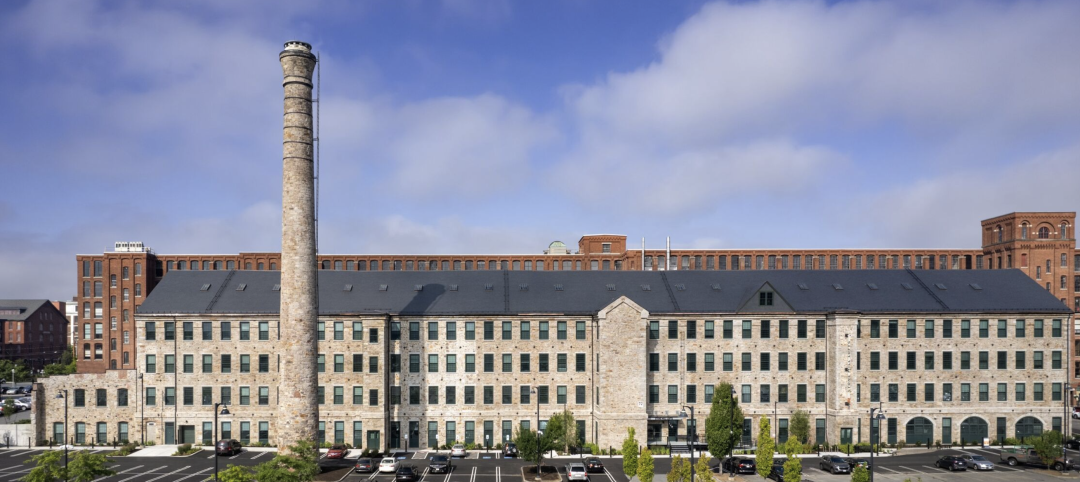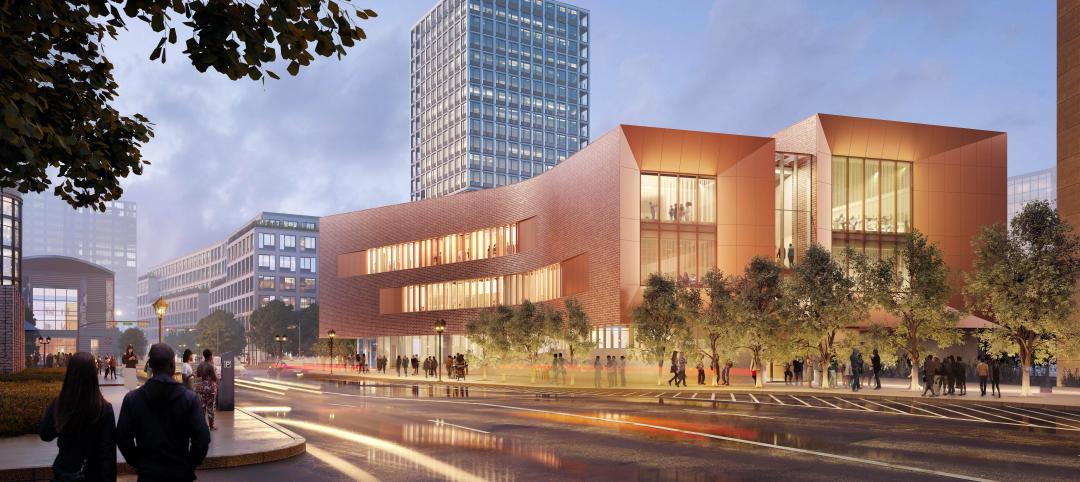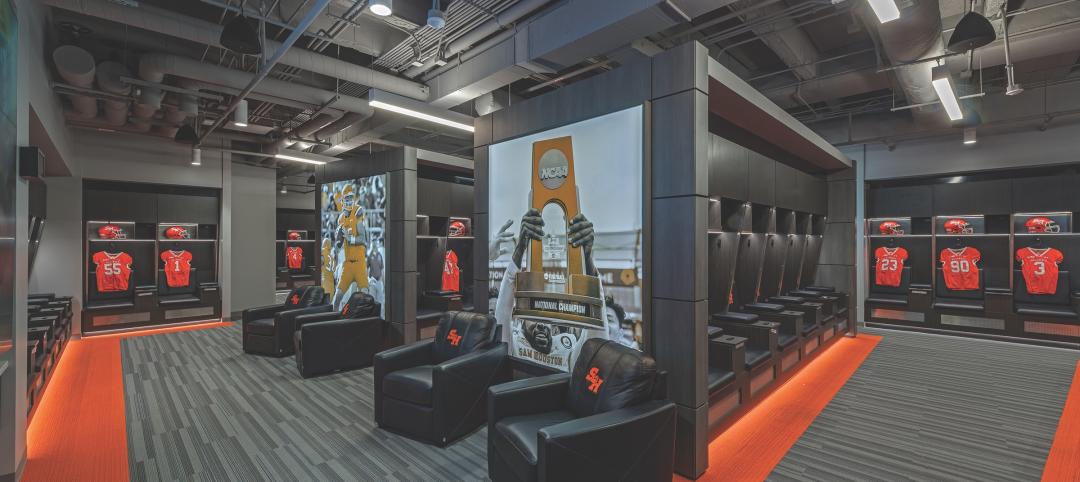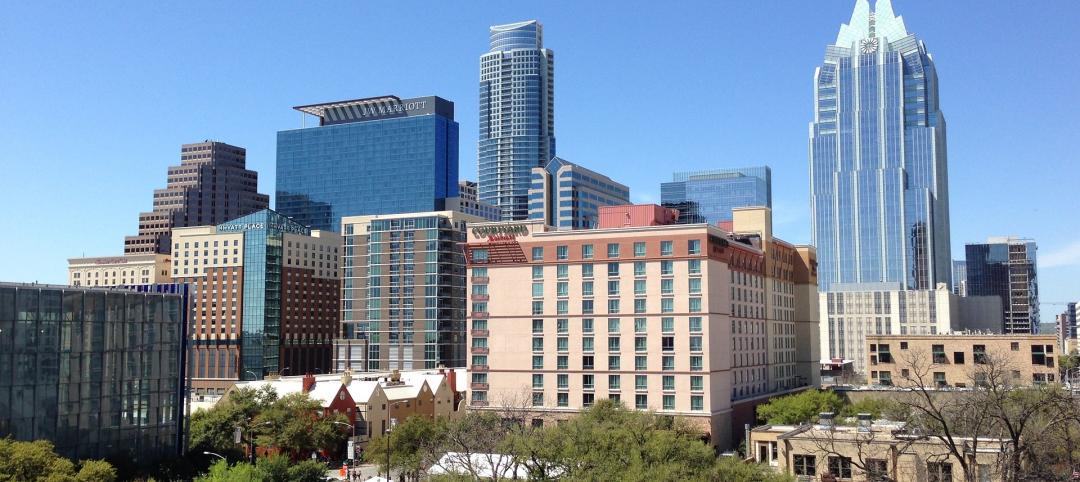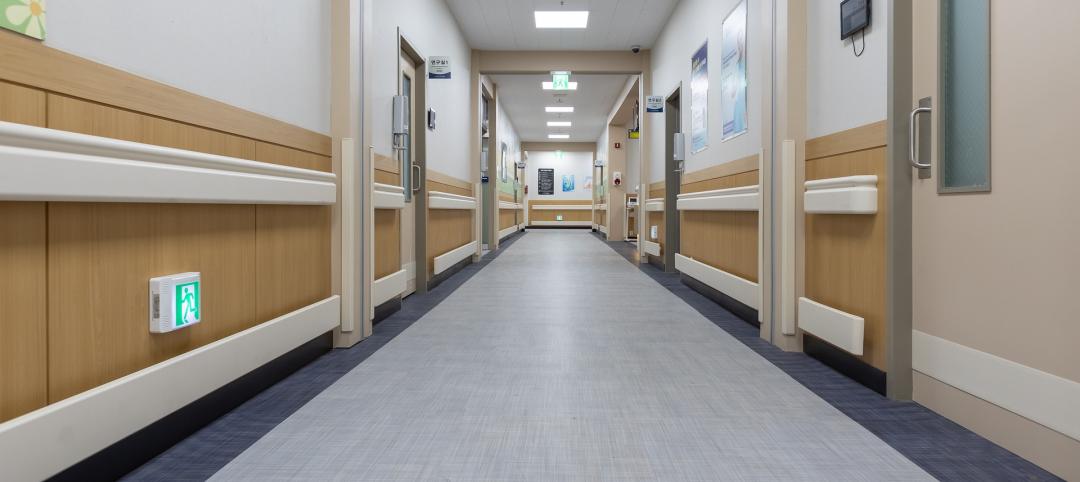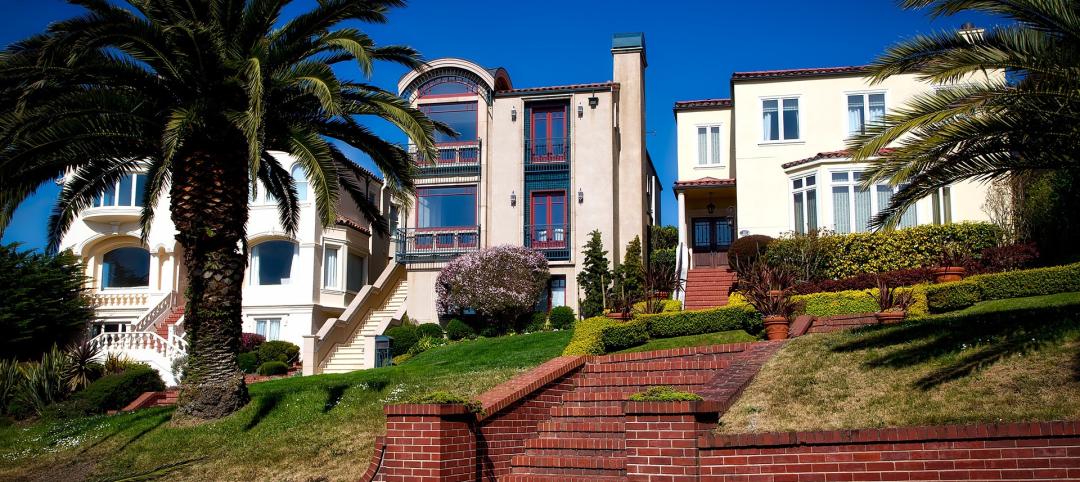Walking the talk. It’s a phrase we’ve all heard and one that gives you a no-bones-about-it proof point. In Knauf Insulation’s case, walking the talk provided the organization with a comprehensive, better-educated green building vantage point – and proof point – when it came time to take a big step in sustainable development.
In 2007 after fire destroyed an office building on the Knauf Insulation corporate campus in Shelbyville, Ind., Knauf targeted, and in 2010, earned U.S. Green Building Council LEED-NC Gold certification for a new 24,860 sq. ft. corporate engineering office building. This provided Knauf with both a challenge and a tremendous opportunity. We became a more active player because of this experience due to the fact that LEED buildings are now pervasive.
Here are two proof points for the growth in green building: more than 40,000 projects are currently participating in the commercial and institutional LEED rating systems, comprising more than 8.3 billion square feet of construction space across the U.S. and in 120 countries; green building is projected to contribute $554 billion to the U.S. gross domestic product for the period 2009 to 2013.
In walking the talk, Knauf experienced the trends and desires that sustainable-minded end-users are after: increased energy cost-savings, enhanced indoor environmental quality and social benefits with responsible resource use and manufacturing. Now, we have a building that is 38 percent more energy efficient than a typical building, which also uses much less water. While we continue to be proud of the ways that the company’s products and processes touch the industrial, commercial and residential markets to create enhanced sustainability, it’s important to note that everything in our sustainable development has been extremely cost-effective. We haven’t had to spend a lot of green to be green.
Sustainability benchmarks like LEED certification are becoming a real target for users of commercial and industrial insulation products - and may even be the right aspiration for your organization.
Working for more insulation credits
There is a point of contention with the USGBC and LEED credits certification - most of the time, all the pipe and duct insulation that goes into a commercial building is part of the mechanical contract. Therefore, it’s not individually considered or singled-out with regard to being available for LEED credit. This is something Knauf Insulation is working on to make commercial builders more aware of the impact of insulation, because if you don’t bid the insulation outside the mechanical contract, you can’t go in and get the recycled content value for the insulation or the renewable resource value that could be in your insulation.
The only way now that the mechanical products can have an impact outside of the building performance, and actually bring in a material and resources credit, is to be considered as a separate contract. We’ve been in communication with the USGBC regarding this particular aspect: getting credit for items like duct and pipe insulation because they have such a huge benefit with their sustainability attributes should be a foregone conclusion.
LEED-ing by example
Our LEED example illustrates that simply the everyday products you use can make a significant green difference to building owners, operators and occupants. We have Knauf Insulation R-40 walls in our building, much more than in a typical building. Using an extraordinary amount of insulation in the walls helped us meet our day-lighting targets.
Today, our insulation also has 55.7% post-consumer recycled content. That in itself is a huge social benefit, but that figure also generates a critical result with manufacturing savings – it allows Knauf to use 15% less energy in manufacturing insulation products. There is perhaps no more noble sustainability story than using post-consumer content to save energy in homes and buildings.
The manufacturing energy example also speaks directly to our pipe insulation regarding embodied energy recovery. When you really examine it, it’s miraculous how much energy you can save per lineal foot of pipe insulation. In about one day, a lineal foot of pipe insulation recovers the energy that it took to manufacture that foot of insulation. And the energy savings are similar with cold pipes; in a day or two, the embodied manufacturing energy is recovered. Insulation is essentially perpetual in what it does. Once the embodied energy is paid back, insulation just keeps saving energy, reducing carbon emission, and saving water via reduced demand on power plants.
Another example from our building is the maximization of daylighting and the minimization of electric lighting. Motion sensors shut off lights when there’s no movement in a room. In the Knauf Auditorium event/training space, heat and ventilation do not turn on unless carbon dioxide sensors recognize the respiration and presence of people using the room. Sustainable features also include water-saving plumbing fixtures and a white membrane roof that minimizes the heat island effect.
Manufacturing trends
The recycled content I mentioned is something that Knauf Insulation is very proud of, but perhaps the most important step in our sustainable development was switching to a bio-based binder (the material that gives our product shape) known as Ecose TechnologyTM, which speaks also to a growing trend with green chemistry, bio-formulations and finding ways to reduce dependency on fossil fuels and fossil-based additives. The 2.5% LEED credit for utilizing rapidly renewable resources is one of the harder LEED credits to get.
For our manufacturing process, we use Knauf family farms that actually grow the same amount of crop that we use for our bio-based binder production. Never in my career did I think I would be interested in sustainable agriculture. It’s important for organizations to actually consider that perspective of looking at alternate ways to source materials. It’s a very positive social aspect of the market transformation toward greener buildings.
Asking the right questions
Sustainable building is the result of the desire and patience to ask the right questions and find the right answers. It makes sense to simulate a building hundreds of times on a computer before you build it to really have a good idea of how it’s going to perform. On the other end of the spectrum, there are still people out there insulating an industrial process to deliver functionality, but not energy efficiency. They’re not designing it to optimum techno-economic performance; there could be a better economic thickness that would use less fuel and deliver fast payback.
More owners and operators of green structures and facilities here and abroad are getting terrific buildings that simply perform better. Realistically, it is also naïve to think that there isn’t skepticism around potentially adding cost to building construction.
For someone constructing a building, if it all comes down to 5 or 10 percent more cost to do a smarter building, and that’s your primary motivator, part of the thought process should be considering the future possibility of not being able to buy fossil fuels any longer – or what if a geopolitical event were to halt the availability of fossil fuel for the U.S. economy? Extending this scenario, if renewable energy is also a future consideration, it may then be too expensive if you haven’t designed your building to perform as well as it possibly can. You would be dealing with the cost of wasted energy.
Energy efficiency is completely critical when you start thinking about renewable energy sources and the probability of success. This is one current difference between the U.S. and Europe, where infrastructure is more rapidly becoming as energy-efficient as possible. In Europe, if you have a building, there’s a built-in incentive to insulate and make a building perform as well as it possibly can. Savings are that much greater and give renewable energy sources a better chance to succeed
Additional advantages
Chief results of sustainable building are resource efficiency and energy efficiency - long-term reducers of cost. There are also additional advantages which may not be so straightforwardly tangible to some, such as comfort. A pleasant work environment is a productive one. In our LEED building, individuals have a three-degree control over their individual office. Compare this to a building that both performs poorly and offers no adjustability for individual spaces; there you might see a haphazard array of space heaters or fans. Space heaters and fans are symptoms of poor-performing buildings.
Like many other LEED-certified buildings, we also have an exercise facility. If you look at healthcare expenses, promoting wellness is both good for employees and employers.
Productivity and comfort may also be enhanced because of acoustics. Since we took our insulation up all the way through the ceiling, you don’t get crosstalk or disruptive noise between offices. Acoustics is one way you can use insulation as an advanced strategy to earn innovation points via LEED certification.
The triple bottom line
When I think about my grandchildren and future generations, I know sustainable choices are the right choices. And they’re often easy choices to make for practical economics, environmental health and for our communities.
Here’s how simple sustainability really is. We take curbside recycling which gets transported by train to our facility, so we can decrease landfilling and the use of virgin resources and also use energy-efficient transportation. We then turn that recycled content into insulation that helps save energy. It’s not any harder than how you’d strategize through a different business operation, but it is the right thing to do and it’s financially viable. +
--
Scott Miller is director of sustainability at Knauf Insulation. With more than 30 years of product assessment and testing experience, Scott is an insulation performance expert with a special focus on sustainability. He holds many insulation product patents and is very active in industry associations such as NAIMA, ASHRAE and ASTM.
Related Stories
Adaptive Reuse | Oct 22, 2024
Adaptive reuse project transforms 1840s-era mill building into rental housing
A recently opened multifamily property in Lawrence, Mass., is an adaptive reuse of an 1840s-era mill building. Stone Mill Lofts is one of the first all-electric mixed-income multifamily properties in Massachusetts. The all-electric building meets ambitious modern energy codes and stringent National Park Service historic preservation guidelines.
MFPRO+ News | Oct 22, 2024
Project financing tempers robust demand for multifamily housing
AEC Giants with multifamily practices report that the sector has been struggling over the past year, despite the high demand for housing, especially affordable products.
Performing Arts Centers | Oct 21, 2024
The New Jersey Performing Arts Center breaks ground on $336 million redevelopment of its 12-acre campus
In Newark, N.J., the New Jersey Performing Arts Center (NJPAC) has broken grown on the three-year, $336 million redevelopment of its 12-acre campus. The project will provide downtown Newark 350 mixed-income residential units, along with shops, restaurants, outdoor gathering spaces, and an education and community center with professional rehearsal spaces.
Office Buildings | Oct 21, 2024
3 surprises impacting the return to the office
This blog series exploring Gensler's Workplace Survey shows the top three surprises uncovered in the return to the office.
Healthcare Facilities | Oct 18, 2024
7 design lessons for future-proofing academic medical centers
HOK’s Paul Strohm and Scott Rawlings and Indiana University Health’s Jim Mladucky share strategies for planning and designing academic medical centers that remain impactful for generations to come.
Sports and Recreational Facilities | Oct 17, 2024
In the NIL era, colleges and universities are stepping up their sports facilities game
NIL policies have raised expectations among student-athletes about the quality of sports training and performing facilities, in ways that present new opportunities for AEC firms.
Codes and Standards | Oct 17, 2024
Austin, Texas, adopts AI-driven building permit software
After a successful pilot program, Austin has adopted AI-driven building permit software to speed up the building permitting process.
Resiliency | Oct 17, 2024
U.S. is reducing floodplain development in most areas
The perception that the U.S. has not been able to curb development in flood-prone areas is mostly inaccurate, according to new research from climate adaptation experts. A national survey of floodplain development between 2001 and 2019 found that fewer structures were built in floodplains than might be expected if cities were building at random.
Seismic Design | Oct 17, 2024
Calif. governor signs limited extension to hospital seismic retrofit mandate
Some California hospitals will have three additional years to comply with the state’s seismic retrofit mandate, after Gov. Gavin Newsom signed a bill extending the 2030 deadline.
MFPRO+ News | Oct 16, 2024
One-third of young adults say hurricanes like Helene and Milton will impact where they choose to live
Nearly one-third of U.S. residents between 18 and 34 years old say they are reconsidering where they want to move after seeing the damage wrought by Hurricane Helene, according to a Redfin report. About 15% of those over age 35 echoed their younger cohort’s sentiment.



